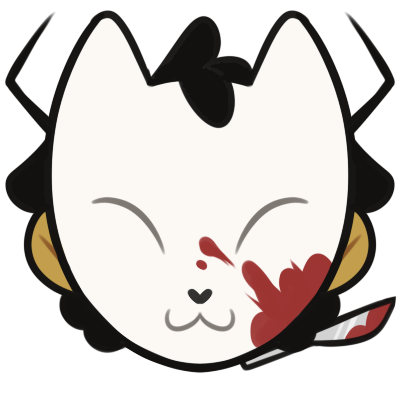[Cosmosdex] The Universal Encyclopedia
[Cosmosdex]
Echomm
Clique Beetle / Tick
Echomm

No art currently, maybe you can help
- Strength-4
- Intelligence-2
- Charisma-5
- Endurance-5
- Agility-7
- Luck-4
Danger Level: Safe
Likes: Teamwork, Running, Notails
Dislikes: Solitude, Uncoordinated groups
Attack Method: A weak bite to wear down prey in group pursuits, or kicking with large back legs in self-defense.
Attributes
Environment: Eukaryote, As petsLifespan: 10 years
Size: 2 ft tall
Diet: Plants
Bodytype: Neckless
Type: Arthropod
Rarity: Common
Original Creator: Schazer
Physical Description
The echomm is an grasshopper-esque capture creature with large eyes, a squared-off face, and sturdy body balanced on its frontmost and middle pairs of legs, which have been adapted for movement closer to a quadruped's gait. The back pair of legs are much longer and covered in spines, folded against the body like a cricket, or perhaps the wings of a bat. The thorax is protected from the spines on the echomm's legs by modified wings, useless for flight, which line either side of the body.
The size of a full-grown echomm depends on how much food they received during their juvenile stage consisting of six moults - fed on a standard diet, an echomm reaches about two feet tall, while fed generously by a doting owner can result in an echomms large enough for a child to use as a short-distance steed.
Behavior
Easy to breed in large numbers, echomms are considered low-tier starter capture creatures for under-resourced villages, particularly those with many E, Y, and G-class children. Like most capture creatures, echomms are affectionate, loyal to their owners, and do not experience pain.
An echomm is an active creature, often running circles around its owner just to burn off excess energy. Its most distinct behavioral quirk is its clicking - by flicking its large back legs across its guard wings, the echomm produces a clear, sharp noise described as anything from a "clack" to a "drrrrrkt". It will make this noise constantly, producing about 75 clicks per minute, at all waking hours. The interval between notes grows further apart when other echomms are present to "fill in the gap", creating the same 75BPM rhythm whether there is one echomm in the vicinity or twenty. The click is heard telepathically as well as acoustically, much to the annoyance of telepathic species who have encountered an echomm.
Echomms display a complex swarming behavior when in groups - their use their clicking to space themselves apart equidistantly, then execute highly efficient search patterns through large areas. The echomms remain highly aware of notails in their "grid", and can be used as a coordinate system to allow their owners to better-organise their movements.
The echomm is perfectly content around notails and other echomms but is unusually aggressive around almost any other fauna - some insectoid species, particularly tailmics, are tolerated if they leave the echomm's owner alone. They will seemingly-mindlessly attack other fauna, even in matchups which end up suicidal for the echomm.
These behaviors make the echomm an ideal capture creature to teach the children of aforementioned classes to work in groups. Not only is a lone echomm noisy and detrimental to owners relying on stealth, they will shatter their own carapaces without other echomms around to share the beat with.
Subspecies
Boombox: While not a true subspecies, B-class and T-class children entering the Woods may apply to receive a fertilised female echomm, whose parthenogenetic children can be reared and sold by the owner to other notails who have lost their original capture creature. As echomms are prolific egg-producers, B-class children learn to cull inferior offspring and ensure resources are only used on the best children. Standard-issue echomms are infertile, being a usually-slightly-mutated clone of the parent.
Stained-Glass: Non-notail bioartisans have selectively bred for this ornamental subspecies, which as the name suggests exhibit a range of translucent colors on the panels of its wings. Their behavior has also been modified to click its legs against these wings at a pace which produces a small and pleasant ringing sound instead of the echomm's usual register, which has been described by its detractors as "a machine gun full of pebbles emptying out onto reinforced glass."
Tattoo: A larger, sturdier subspecies occasionally used by Q- and Y-class swarms in the field. They have a stronger bite and are fitted with armored guard wings that produce a booming, drumlike tone at approximately 150BPM instead of the classic click. The increased tempo aims to energise its masters and intimidate foes. They will swiftly take position and hold their ground in even the most chaotic of battlefields, providing the troops with crucial map data and a means for squdmates to relay their positions to each other.
Special
None.
Trivia
• Echomms are not particularly popular as pets due to the need to either keep twenty of them at once, or; spend a fortune on leg mufflers, replacement wing cases, or other paraphernalia to stop an individual smashing its own body apart.
Image Gallery
No art currently, maybe you can help.

